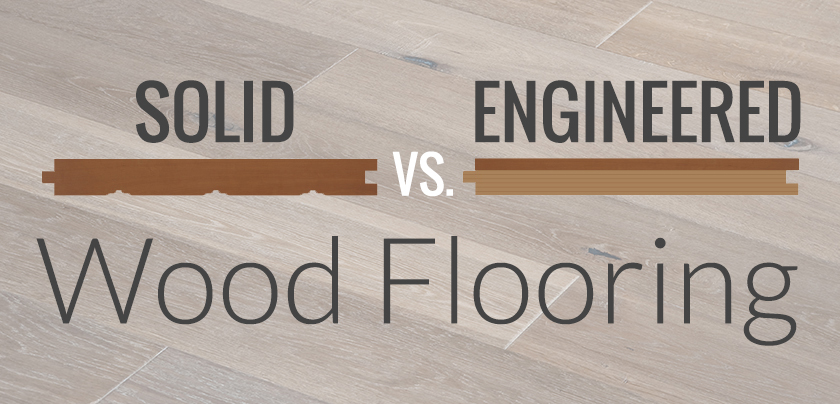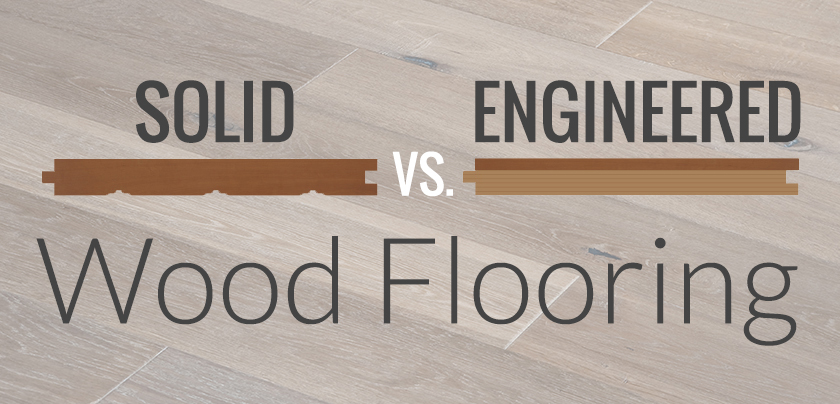What Is Engineered Hardwood Flooring? Is Engineered or Solid Wood Better? Is Engineered Flooring Right For My Home?

The term “engineered” has many meanings and, as such, can be confusing when it comes to flooring. Here are a few of the facts and reasons why we love engineered flooring!
1. Engineered Wood Flooring Is Made From 100% REAL Wood.
This is probably the #1 myth about engineered wood. The term “engineered” simply indicates the construction process used to create the wood flooring. Rather than milling the entire plank from a single log, it is made from a solid wood top layer, with a multi-ply backing, like plywood called the “substrate”.
2. Engineered Flooring Provides Enhanced Durability
This multi-ply substrate actually enhances the stability and strength of hardwood flooring. The glue and layering process creates a denser, more dimensionally stable foundation than solid wood. It also limits the expansion or contraction that wood flooring experiences through seasonal environmental changes and helps to prevent more serious maladies like cupping, buckling, or rippling.
3. Engineered Wood Flooring Saves More Forests
The engineered substrate, which makes up the largest majority of each plank (and is never seen after installation) is made from fast growing, renewable trees like birch, elm, or pine. This enables us to preserve older growth trees such as oak, maple, hickory, or walnut for the top layers. We are able to make about four planks of engineered flooring using the same amount of hardwood that we would need to create ONE plank of solid flooring!
4. Engineered Wood Flooring Is Typically Less Expensive Than Solid Wood Flooring
Due to the wood savings mentioned above, engineered flooring is often less expensive than solid. There are many other factors that play into prices for specific projects and specific products, but overall, this is often a “win-win-win” for the environment, the manufacturer, and the consumer!
5. Many Engineered Floors Can Be Refinished Just As Many Times As Solid Wood Flooring
Another common myth regarding engineered flooring is that the flooring cannot be refinished for fear of exposing the underlying substrate. The fact is that regardless of solid or engineered construction, one can only refinish hardwood floors down to the tongue and groove(T&G) point. Many engineered products, especially in The Garrison Collection(up to 5mm thick!), have just as much wear layer as that found on a solid hardwood product.

In addition, having the ability to re-sand a hardwood floor numerous times is highly over rated. In reality, there are a very, very small percentage of consumers who purchase a hardwood floor and at some point down the road would actually re-sand the floor they purchased years earlier. Most consumers, if they do any future overhaul of their hardwood floors, would just re-oil or recoat their floors to make them look new again. Re-sanding a floor changes the original look of the floor, which was bought because it went well with the project décor, and erases any face treatment such as distressing or wire brushing that would have been included in the expense of the original floor purchase. In most circumstances, consumers who would actually put out the expense of re-sanding an older floor are called “new owners”.
Solid Wood Flooring Is Good, Too!
At this point, you might be wondering, “Why not buy engineered wood flooring?” We wonder the same thing, hence our broad selection of engineered options. That said, we also offer an array of solid flooring choices. Talk with your flooring professional about which would be the best choice for your space!
